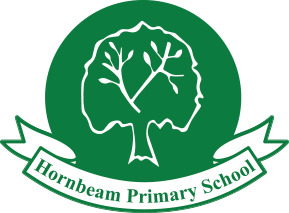Developing Numeracy in Year 2
In Year 2 children learn to count in sequences and learn the 2, 5 and 10 times tables. They continue to use manipulatives to help them with calculations but are also expected to increasingly use reliable mental and written methods. The learn more about hours and minutes and are taught how to recognise the time on a clock face. Children will learn how to recognise and calculate fractions such as halves and quarters.
These are the objectives that children will be taught in Numeracy during Year 2.
Year 2: Number and Place Value
- count in steps of 2, 3, and 5 from 0, and in tens from any number, forward and backward
- recognise the place value of each digit in a two-digit number (tens, ones)
- identify, represent and estimate numbers using different representations, including the number line
- compare and order numbers from 0 up to 100; use <, > and = signs
- read and write numbers to at least 100 in numerals and in words
- use place value and number facts to solve problems.
Year 2: Addition and Subtraction
- solve problems with addition and subtraction:
- using concrete objects and pictorial representations, including those involving numbers, quantities and measures
- applying their increasing knowledge of mental and written methods
- recall and use addition and subtraction facts to 20 fluently, and derive and use related facts up to 100
- add and subtract numbers using concrete objects, pictorial representations, and mentally, including:
- a two-digit number and ones
- a two-digit number and tens
- two two-digit numbers
- adding three one-digit numbers
- show that addition of two numbers can be done in any order (commutative) and subtraction of one number from another cannot
- recognise and use the inverse relationship between addition and subtraction and use this to check calculations and solve missing number problems.
Year 2: Multiplication and Division
- recall and use multiplication and division facts for the 2, 5 and 10 multiplication tables, including recognising odd and even numbers
- calculate mathematical statements for multiplication and division within the multiplication tables and write them using the multiplication (×), division (÷) and equals (=) signs
- show that multiplication of two numbers can be done in any order (commutative) and division of one number by another cannot
- solve problems involving multiplication and division, using materials, arrays, repeated addition, mental methods, and multiplication and division facts, including problems in contexts.
Year 2: Fractions (including decimals and percentages)
- recognise, find, name and write fractions â…“, ¼, 2⁄4 and ¾ of a length, shape, set of objects or quantity
- write simple fractions e.g. ½ of 6 = 3 and recognise the equivalence of two quarters and one half
Year 2: Measurement
- choose and use appropriate standard units to estimate and measure length/height in any direction (m/cm); mass (kg/g); temperature (°C); capacity (litres/ml) to the nearest appropriate unit, using rulers, scales, thermometers and measuring vessels
- compare and order lengths, mass, volume/capacity and record the results using >, < and =
- recognise and use symbols for pounds (£) and pence (p); combine amounts to make a particular value
- find different combinations of coins that equal the same amounts of money
- solve simple problems in a practical context involving addition and subtraction of money of the same unit, including giving change
- compare and sequence intervals of time
- tell and write the time to five minutes, including quarter past/to the hour and draw the hands on a clock face to show these times
- know the number of minutes in an hour and the number of hours in a day.
Year 2: Geometry - properties of shapes
- identify and describe the properties of 2-D shapes, including the number of sides and line symmetry in a vertical line
- identify and describe the properties of 3-D shapes, including the number of edges, vertices and faces
- identify 2-D shapes on the surface of 3-D shapes, [for example, a circle on a cylinder and a triangle on a pyramid]
- compare and sort common 2-D and 3-D shapes and everyday objects
Year 2: Geometry – position and direction
- order and arrange combinations of mathematical objects in patterns and sequences
- use mathematical vocabulary to describe position, direction and movement, including movement in a straight line and distinguishing between rotation as a turn and in terms of right angles for quarter, half and three-quarter turns (clockwise and anti-clockwise).
Year 2: Statistics
- interpret and construct simple pictograms, tally charts, block diagrams and simple tables
- ask and answer simple questions by counting the number of objects in each category and sorting the categories by quantity
- ask and answer questions about totalling and comparing categorical data.
- s for quarter, half and three-quarter turns (clockwise and anti-clockwise).

 Mongeham Road, Deal, Kent CT14
9PQ
Mongeham Road, Deal, Kent CT14
9PQ 01304 374033
01304 374033 office@hornbeam.kent.sch.uk
office@hornbeam.kent.sch.uk



